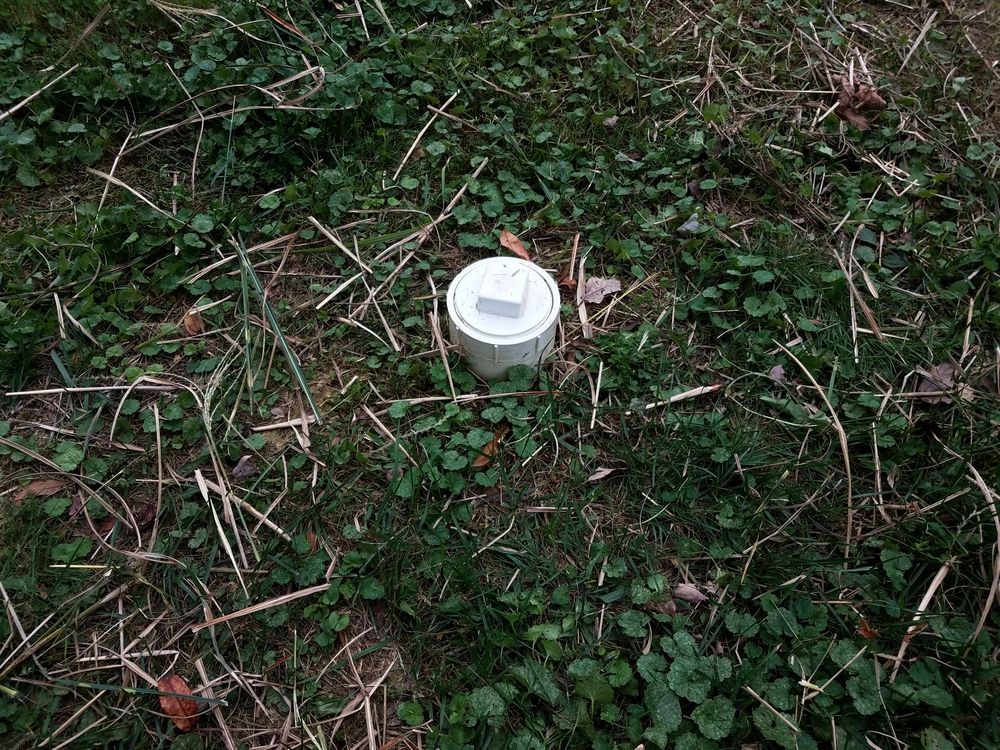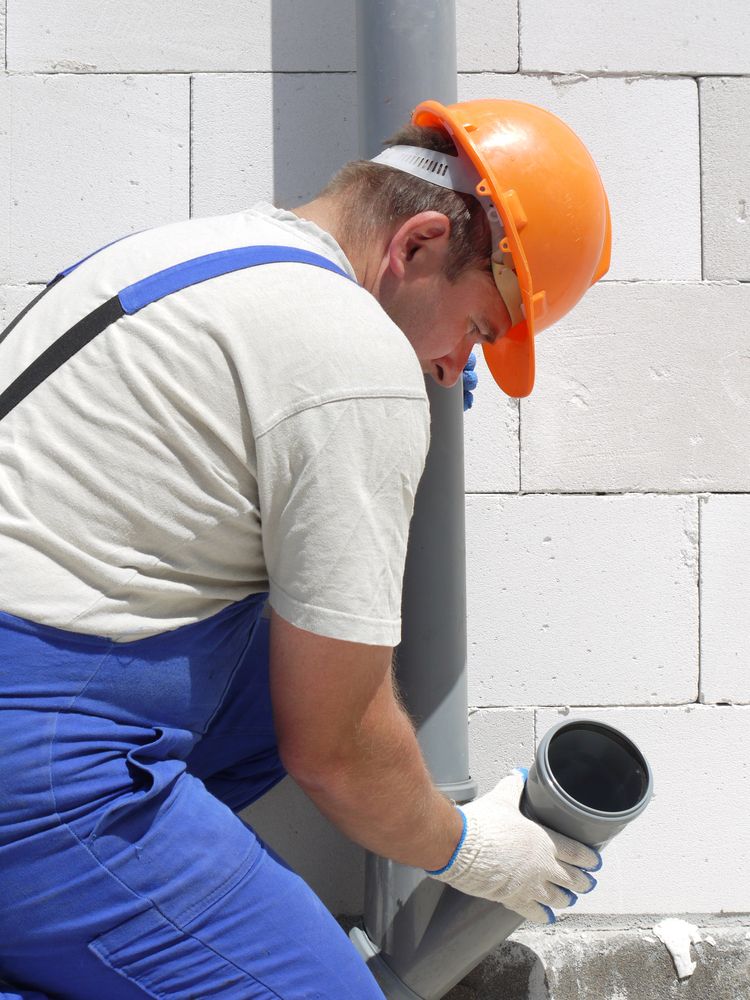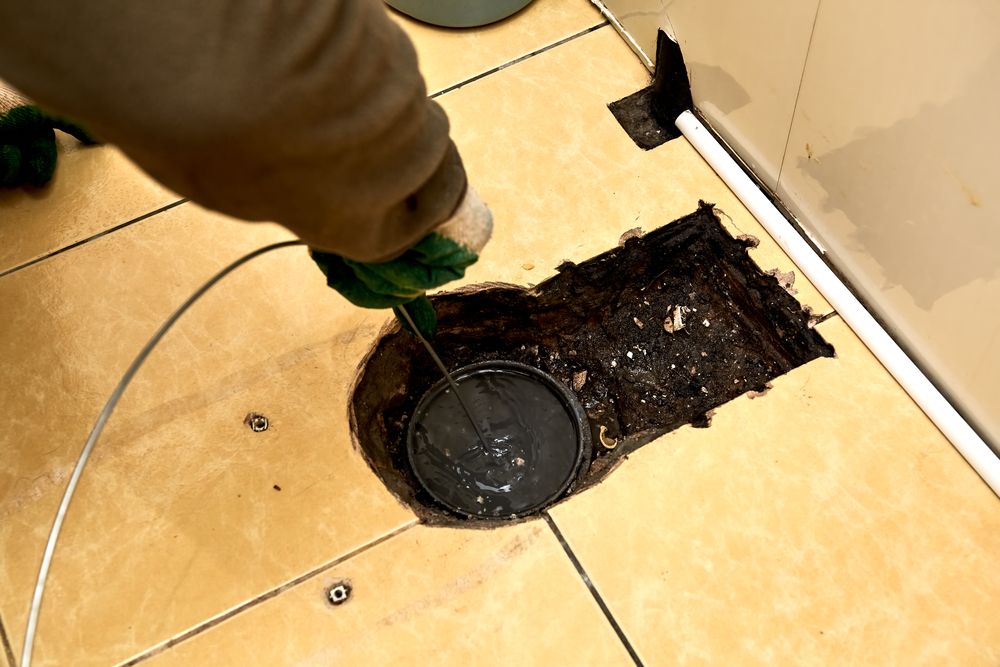If you don’t know what a sewer line cleanout is, don’t worry, you’re in the right place. This article will explain everything you need to know, including how to locate your sewer line cleanout, the difference between indoor and outdoor cleanouts, if all homes have cleanouts, and how professionals use cleanouts to inspect or clean your sewer lines.
What Is A Sewer Line Cleanout?
A sewer cleanout, also called a drain cleanout, is an access point that plumbers or sewer line experts can use to clean, fix, or inspect your main sewer line. The main sewer line is the pipe that carries all your waste to a septic tank or city connection. The sewer line cleanout gives professional plumbers the ability to reach clogs and backups without digging up any pipes. We recommend only letting experts use and access your sewer line cleanout, but you should know where yours is just in case.

The sewer line cleanout is a 3 to 6-inch diameter black or white pipe. The cleanout will either be made of PVC or cast iron, depending on when your home was built or what materials were available at the time.
Does Climate Affect Where My Sewer Line Cleanout Is Located?
Yes, climate can affect where your sewer line cleanout is located.
- Colder climates – Standard homes in colder climates usually have sewer line cleanouts located inside your house.
- Slab foundations in colder climates – Homes built on slab foundations in colder climates can either have inside or outside sewer line cleanouts. The cleanout can be located in a bathroom, garage, utility room, or outside.
- Warmer climates – Standard homes built in warmer climates typically have outdoor sewer line cleanouts.

How To Locate Indoor Sewer Line Cleanouts
Here are a few places your indoor sewer line cleanout might be located.
- Follow your drainage pipes to the main sewer line – All of your bathroom and kitchen fixtures are connected to your main sewer line using drainage pipes. Look for a PVC or cast iron pipe that leads away from your toilets or sinks. If the drainage line leads into your walls, you can buy or rent an electronic detector that can scan PVC and cast iron pipes.
- Look for a T- or Y-shaped pipe fitting with a cap or plug – The sewer line cleanout is typically located on the main sewer line if it’s installed indoors. It should be located just before the pipe goes through your foundation. The cleanout will be on a T- or Y-shaped pipe fitting and will have a threaded plug with a square nut. The square nut may also have a plastic covering.
- Check your bathrooms, utility rooms, and garage – Your sewer line cleanout will be close to a cluster of drain pipes like a full bathroom or utility room. Check every space you might think of.
How To Locate Outdoor Sewer Line Cleanouts
If the sewer line cleanout is not located inside your home, it’s time to check outside.
- Walk to your septic tank or nearest maintenance hole – The sewer line cleanout should be located between your home and septic tank. If your sewer line leads to a city connection, check in between the nearest maintenance hole or curb with a large “S” stamped into the concrete.
- Start tracing your steps – Once you find your septic tank or maintenance hole, walk back towards your home, inspecting the ground along the way.
- Move any obstacles – If your home is covered in lawn decorations, bushes, trees, or tall grass, move what you can to see if they are hiding your cleanout.
- If you can’t find it – If you can’t find your sewer line cleanout, call an expert to come and find it for you.
What If My Home Doesn’t Have A Sewer Line Cleanout?
It’s rare, but if you or a professional can’t find your sewer line cleanout, it’s possible your home wasn’t equipped with one. This makes it a little more challenging to access your sewer pipes, but not impossible. If so, a plumber can use two other access points to reach a clog or backup.
- The roof vent – The roof vent, also called a sewer vent, allows built-up gas to escape from your sewer pipes. This vent prevents gas from leaking into your home or back through your toilets and sinks. Your sewer line is accessible through the roof vent, but getting a camera or robotic cutter through all the twists and turns in your pipes can be challenging.
The toilet – If you don’t have a cleanout inside or outside your home, and the roof vent is too challenging to use, plumbers can remove a toilet from your bathroom. This gives them direct access to your sewer line by using your toilet’s drain pipe. After your sewer line is inspected or your clog is removed, your toilet will be put back.

How Do Plumbers Use Your Sewer Line Cleanout?
As we mentioned above, plumbers can use your cleanout to inspect or clean your main sewer line.
- Inspecting your sewer line – Your cleanout gives plumbers a clear access point where they can insert a CCTV sewer camera. This makes inspecting your main sewer line easy and simple since plumbers don’t have to remove or dig up any pipes. Inspections are also beneficial for finding problems in your sewer line before they worsen, such as minor clogs or vulnerable pipe sections.
- Cleaning your sewer line – Plumbers can use two different methods to clean your sewer line: hydro-jetting or robotic cutting.
- Hydro-jetting is when thousands of pounds of water are shot through your sewer pipes, cutting and clearing any clogs or roots.
- Robotic cutting is when a mechanical device fitted with robotic cutting arms is inserted into your sewer pipes. These cutters can dig through almost anything, including metal and concrete.
Who Can Locate Your Sewer Line Cleanout Near You?
If you can’t find your sewer line cleanout in your home, or you have a clog and need someone to access your pipes, call SWE Sewer Solutions & Engineering. We are a bonded, city-approved, and licensed professional company serving all of Southern California. We remain open and maintain 24-hour emergency services in case you need us when you least expect it. Call today for your in-depth inspection and estimate.